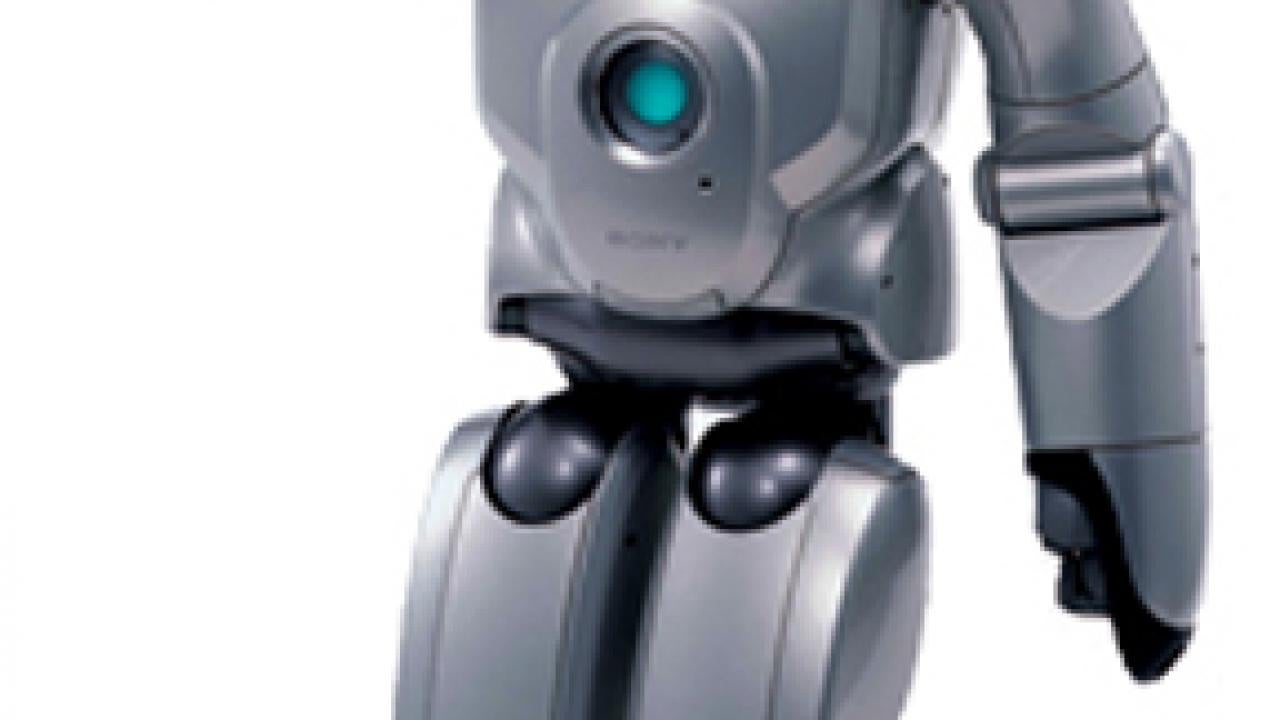Whether driving on the highway or walking down the street, we pick up on deliberate signals and unconscious cues to predict what other people are going to do and act accordingly.
But robots have trouble following each other, for example, when the leader turns a corner and disappears from sight. It is a fundamental problem in robotics -- and one that a UC Davis team is working on,
by developing a control system that mimics how people sense where their leader is going. We may notice, for example, that the leader turns his or her head a fraction of a second before making a left or right turn.
The research team, led by Sanjay Joshi, associate professor of mechanical and aeronautical engineering, developed a control system whereby a robot can pick up on the same kind of behavioral clues. Joshi, graduate student Michael Chueh and undergraduates William Au Yeung and Calvin Lei tested the system using a small, commercially available robot, the Evolution Robotics Scorpion.
The robot's camera could identify a target on the lead robot, and the robot's onboard computer could combine the target information with behavioral cue information.
Rather than have the lead robot signal the follower directly, the research team sent "behavioral cues" to the follower via wireless link. Effectively, the cues told the robot, "the leader might be about to turn right" or "might be about to turn left."
To develop a decision on how to move, the follower robot was programmed to take into account the lead robot's behavioral cues and the follower's prediction of the lead robot's movement, based on the leader's speed and direction. Robots that incorporated behavioral information into their decisions performed much better at following the leader around corners than others, the researchers found.
"We think that if we can embed these cues in control systems, we can make following more reliable," Joshi said.
Robots that are better at following could be easier for people to work with. A hospital robot, for example, could follow a doctor on his or her rounds.
A paper describing the work appeared in the August issue of IEEE Transactions on Industrial Electronics.
Media Resources
Dave Jones, Dateline, 530-752-6556, dljones@ucdavis.edu
